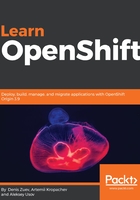
Container management systems overview
Containers offer unmatched benefits in terms of density, deployment speed, and scalability in comparison to virtualization. But containers by themselves are not enough to match all the requirements of today's business, which expects the infrastructure to be adaptable to dynamic challenges. It is quite simple to start and manage a couple dozen containers, but things get complicated when the number climbs to hundreds, which is very common for large workloads. This is where Container Orchestration Engines (COE) come in. They bring true power to containers, offering various mechanisms to deploy, destroy, and scale multiple containers rapidly.
There are multiple container management solutions available, with the most popular being Kubernetes and Docker Swarm:
- Kubernetes: First released in July 2015, Kubernetes comes directly from Borg—a cluster management and job scheduling system developed by Google. Kubernetes was also developed by Google engineers; in fact, many developers who previously worked on Borg later moved to working on Kubernetes. Like Docker, it is written in Go, the language also designed and implemented by Google in 2007. It's built around the concept of resources—complex API entities that serve as an interface to the underlying mechanisms and serialized in YAML or JSON. All software components run on two types of machine: masters and nodes. Masters perform management, dispatching, and synchronization functions, while nodes provide a runtime environment for running containers.
- Docker Swarm: Docker Swarm is a native container orchestration solution provided by the Docker project. It has many features that Kubernetes provides, but does this using different mechanisms and can be used to quickly deploy a single service or even a stack of services on worker nodes. Swarm Cluster consists of two types of node: managers and workers. Managers control the placement of containers, which are referred to as tasks in Swarm terminology, and workers do the heavy lifting of running containers.